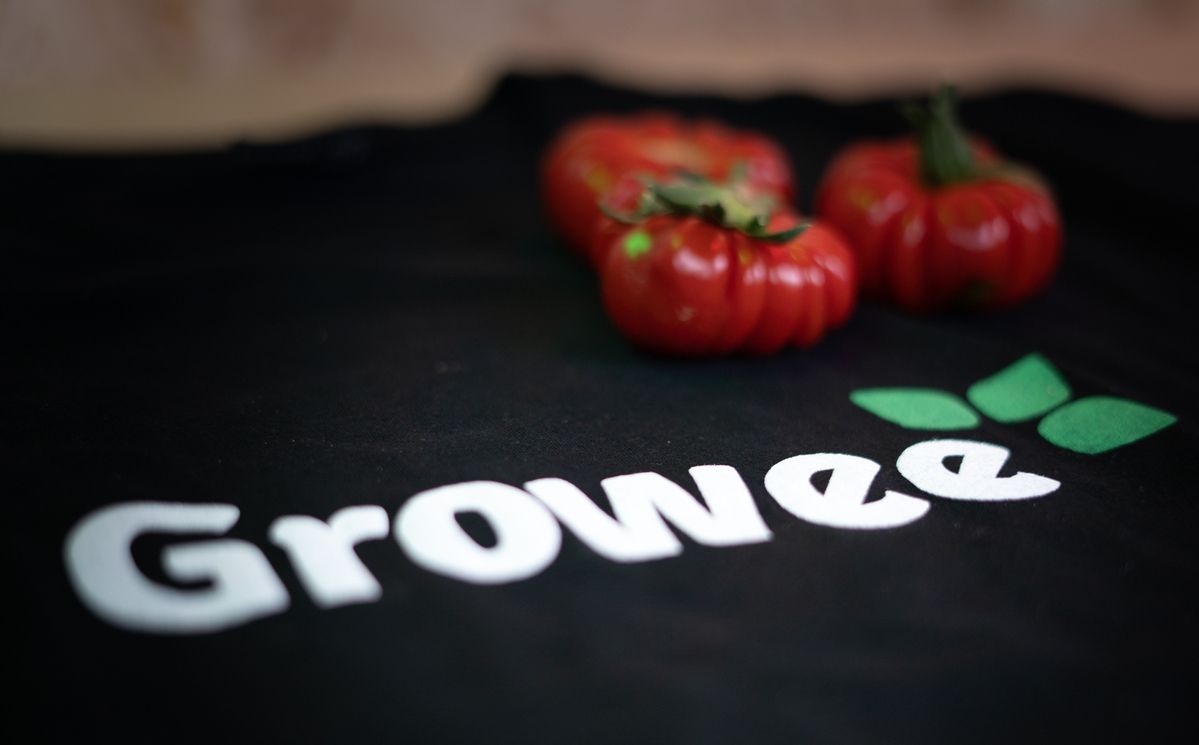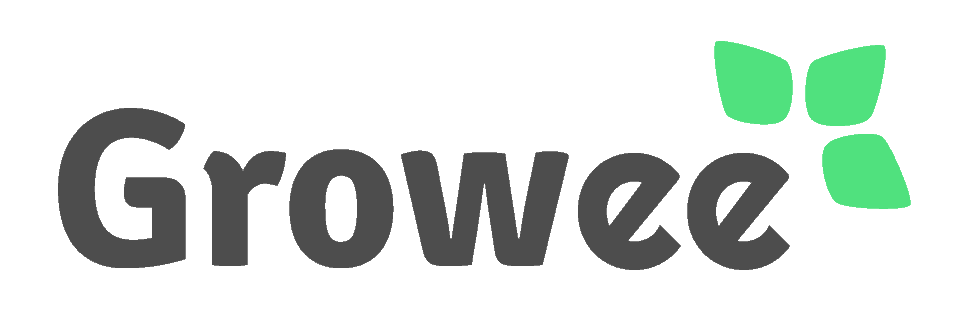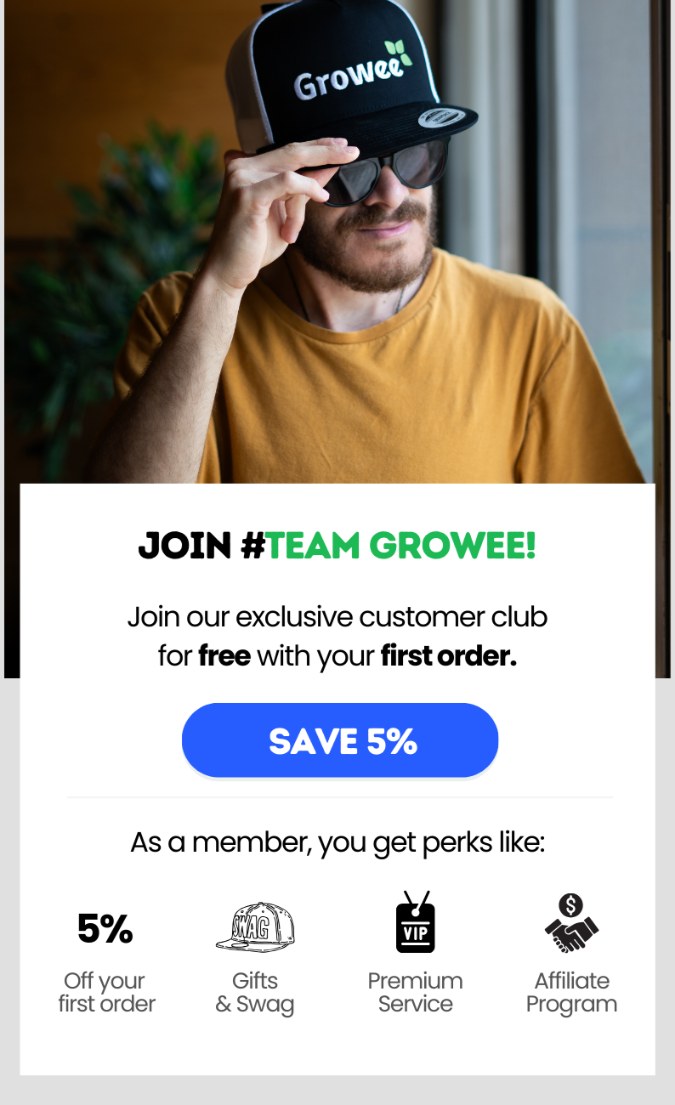As complicated as it may seem initially, growing your tomatoes hydroponically can be both inexpensive and straightforward, provided you have the right inputs and process.
Once you have a proper setup, you can grow your tomatoes in indoor and outdoor environments.
While there are many things you could grow this way, tomatoes respond particularly well.
So, what do you do?
Well, you’ll be getting the full overview below, including the pros and cons of the method, as well as what you need to do both indoors and outdoors for the best results. There is even information on the best hydroponic system available!
See How Growee Can Save You Time By Automating Your Plants Feeding
Water pH – Automated pH Up and Down Control
Nutrients Mixing – Automated Nutrient Dosing with Target EC / PPM Control.
Control From Anywhere – WiFi Connection and mobile App
Pros and Cons of Growing Hydroponic Tomatoes
If the hydroponic growing method is taking off the way it is, then it is obviously beneficial. Conversely, it also comes with some downsides to bear in mind. This is the time to explore both, starting with the pros:
- While traditional methods are successful, the right hydroponic growing circumstances can provide you with a yield that is much much greater than its standard counterpart.
- Since there’s no soil involved in the method, you end up with a much cleaner experience. This is particularly advantageous for those who are using an indoor environment and may want to keep things clean.
- External conditions are highly uncontrollable , meaning that there is going to be a designated growing season. However, since indoor hydroponic conditions can be altered, you could grow all year round.
- While soil-based gardening methods would appear to be more water efficient, a hydroponic system will usually be about 90% more effective.
- When you use soil to grow, you are understandably restricted by the quality of soil and farm or yard boundaries and climate. The hydroponic method is not restricted in this way, meaning you could use it anywhere ,inside ,outside or even on the roof with the addition of environment controls!
- Tomatoes will typically grow anywhere between 30% and 50% faster with the hydroponic method than they will when grown in soil.
With the advantages out of the way, it’s time to address the cons:
- Error tolerance in hydroponics is much lower. Even the smallest mistakes, such as wrong PH or EC, are significantly magnified. That’s because instead of having soil as a buffer, you are technically directly interacting with the plant’s roots.
- Your hydroponic setup will probably directly affect your need to prune the tomatoes. For example, if you have grow lights, you can’t allow the plants to reach them.

How to Grow Hydroponic Tomatoes at Home?
Remember that the idea here is to make this process as convenient as possible. So, instead of looking to build your kit yourself, which will full of pitfalls unless you’re a seasoned professional,I suggest you to buy a complete ebb-and-flow or other hydroponic system.
Step One: Get an Ebb and Flow or other hydroponics sytem
Check the options then find yourself a quality one to buy
Step Two: Spec Your Grow Tray
If an ebb and flow system was chosen ,the size of your grow tray is very important. You’re setting up one big system, and this tray is meant to hold all the tomato plant pots that are going to make it up. You don’t want to be dealing with any water overflow, therefore, the edge height that you’re choosing must be appropriate with the appropriate drain to the reservoir.
Step Three: Spec Your Reservoir
Speaking of the reservoir, it’s another critical component of your hydroponic system. After all, you’re going to find your water pump here, and arguably even more importantly, this is where your nutrient solution is going to be.
Light is important to several elements of the tomato growth process, but this is not one of them. Therefore, you want a quality lid to ensure that no light exposure happens within. Beyond that, having a lid also allows you to keep anything unwanted out.
Step Four: Get Your Tray Stand
The grow tray referenced earlier will not be sitting on the floor. If it did, the nutrient solution wouldn’t be able to drain back into the reservoir as it should. Therefore, you want to have a tray stand to provide the necessary elevation to facilitate this process.
There are two additional benefits too! First, you end up with a space-saving design, considering you get to store your reservoir underneath the stand.
Additionally , you also get to bring your tomato plants to a comfortable working level. Whoever said you couldn’t have convenience and function in the same system?
Step Five: Pump and Timing
Your ebb and flow setup is an assortment of components. However, none of them have a job more important than that of the timer and the hydraulic water pump. These two are going to ensure that your tomato plants are fed as they should.
To minimize the level of manual effort needed, your hydroponics feeding schedule is going to come into play. There are different timers on the market so shop around. Additionally, you want a submersible water pump.
Connecting the timer to the water pump will require several fittings. Additionally, for the nutrient solution to get to the reservoir from the pump and back down again through the drain, appropriate fittings and tubing will be needed. The construction of these must be appropriate since the last thing you want in your hydroponic system is leaks.
Step Six: Ensure You Have the Right Plant Pots
You’re going to find that either fabric pots or net pots are used for hydroponic setups. While traditional pots are great for soil applications, the others have the space necessary to ensure that roots can grow through and receive all the oxygen they need. After all, this is a water-based setup, which means allowances must be made to prevent root rot which includes oxygenation to promote good bacteria.
Step Seven: The Growing Substrate
If you’ve ever dealt with tomato plants before, you know that when grown, they can be heavy and large. Your growing substrate is going to help you here. If you want something that’s pH neutral and completely inert, consider expanded clay pebbles,perlite or rock wool as good options.
Remember that your stand is going to be bearing all the weight here, so it needs to be sufficiently strong since your pebbles are not light by all means. Additionally, the water retention is minimal compared to soil so regular watering is mandatory.
Thankfully, you don’t have to keep buying new sets of expanded clay pebbles for example, since they are reusable with sterilization.
Step Eight: Setup the Lights
With an indoor setup, you don’t have the same kind of access to natural light that you would outside. Therefore, you must compensate. About 8-10 hours of direct sunlight or bright light outside per day are required. However, 12-18 hours of light is a typical requirement for high-yield tomato plant varieties.
This is where your grow lights come into the mix. Fluorescent lights are pretty mid-range in terms of price and function. On the budget side of this spectrum, you have high-pressure sodium vapor or HPS lights, and on the high end of light power, efficiency, and price, there are LED grow lights using mch less electricity.
Step Nine: Temperature Optimization
As you probably know, different plants thrive under different conditions. As far as tomatoes go, their preference is to be grown in warmer weather. Remember the statement about being able to see growth all year round?
This is where your indoor setup can make a huge difference. If you can maintain that warm environment for the plants even during the winter, then you’re on your way. Dampness and humidity should also be factored into the equation here.
Step 10: Airflow Verification
Your hydroponic setup is not immune to mold. Worse even, it can get on the tomatoes, as well as the leaves and branches of the plants. The best way to combat this is to have good airflow by implementing fans and humidity extractors.
Step 11: Planting and Nutrients
The planting element comes with a few considerations. First, there are the tomato cultivars. You have indeterminate and determinate varieties. One is essentially a vine, and one grows like a bush. Additionally, there are differences in when they will bear fruit.
Remember that you may need to move the plants around, so leave yourself the space in the room to do so.
You also want to think about whether you want to use seedlings or seeds. However, bear in mind that seedlings that were previously in the soil can introduce foreign elements that affect your entire hydroponic setup. It only takes one infected one to destroy your entire tomato crop.
As important as water is, it’s simply not enough to grow a plant. It seems to work well by itself in soil-based configurations because the soil will have certain nutrients. Even then, additional nutrients will often be used.
Here, your choice of nutrient package is important . Note that some are specifically designed for hydroponic systems, and these are the ones you need to get. If not, the system could clog up.
Anyway its important to add a debris filter for the returning water.
The nutritional needs of hydroponic tomatoes are specific so it’s probably a good idea to look for a package that was created for tomatoes.
Step 12: Maintenance
Planting is one thing. There is a maintenance element that forms a part of the hydroponic equation. First, your solution must change at intervals based on your feeding schedule.
Next, maintaining an appropriate pH level is of the most importance. Doing so allows for the effective use of nutrients. You want to strive for something between 5.5 to 6.5,changing the PH as the growth goes through its stages .
This could be done autonomously simply by installing A GROWEE UNIT
Again, pruning is important as tomato plants may get quite large . Beyond space constraints, remember that blockage of your grow lights creates potential problems for the crops and the grow facility.
How to Grow Hydroponic Tomatoes Outside
Naturally, your hydroponic system can also be set up outside instead. While there is some level of overlap, there are also some differences to bear in mind. Therefore, it’s time to look at the steps involved in that process.
Step One: Get Your Hydroponic System
Again, things start with choosing a hydroponic system. It’s essential that the one you choose is well-designed and offers the spread of functionality you will need. Some kits are for smaller spaces, while some can facilitate setups on their larger side.
Step Two: Choose Your Nutrient Mix and Growing Medium
If the plant roots are in a growing medium, then the hydroponic method will immediately work better. Again, expanded clay pellets are a good idea. They’re the most common because of their low price and great functionality.
Note that some people may prefer to use coconut coir. Its fibrous system is excellent for the hydroponic growth process, as is perlite.
On the side of the nutrient mix, many of the same rules apply. Tomatoes are heavy feeders, after all. Additionally, you want it to be specific for tomatoes. That way, you don’t need to worry about the amount of NPK content or any other areas of optimization.
Step Three: Trellis
When growing tomato plants outside, it’s good to ensure that they have the right support to grow the way you want. This is where a trellis may come into the equation. Depending on the hydroponic tomato growing kit used, you may find a trellis already present. If not, there may at least be a frame that’s conducive to your tying the tomato plants to it.
Whether it’s already there or you must set it up yourself, the setup should always include it. Even if you are using bamboo sticks or poles as attachment points, you would be setting yourself up for a way better experience.
Step Four: Nutrient Preparation
After choosing your seeds or seedlings, your next step is to have your reservoir filled with your water and nutrient mix. Typically, waiting for the solution to be at room temperature or the coolest possible ,maybe even using a water chiller. Of course, if your system takes care of this, then there’s no need for you to be concerned about it.
Step Five: EC and pH Level Checks
Two of the biggest elements that make up a proper hydroponic solution are its electrical conductivity and its acidity. The first speaks to the extent of nutrients present, while the second speaks to the balance between acidic and alkaline. As indicated before, while tomatoes can survive at a pH of between 5.5 and 6.5, the optimal range is between 6.0 and 6.5. On that note, you want your electrical conductivity level to be between 2.0 and 5.0, depending on the growth stage.
Step Six: Kit Connection
The process here can differ greatly depending on what kind of kit you use. Some are designed with things done for you than others, and they can get you going a lot quicker. When that’s not the case, elements such as connecting the timer to the mains, putting the air stone in the reservoir, and connecting the irrigation hose to the grow tank will all be steps that you must take care of.
Step Seven: Disinfection
A working hydroponic system is a clean one. Therefore, before you get started, the growing medium must be adequately disinfected and washed. Note that every time you have a crop change, you must do this again. The cleaning agents are 3%hydrogen peroxide, chlorine or alcohol and water, and then triple water wash and drain to remove any residue.
Step Eight: Setting the Medium in The Pots
With your sterilization completed, you now have a clean base. Note that alcohol needs a few minutes to evaporate, so wait a while and wash with water before you start your planting. Afterward, feel free to put your growing medium into your pots.
Step Nine: Planting and Timing
The planting process here is not that much different from the one that will typically use be used for soil. If you wish, you can do the planting and the growing medium placement at the same time. Remember that the roots need space and use the growing medium to ensure that the base of the stems are covered.
Step 10: Turn It On!
This is where all the magic happens. The only thing that’s left to be done at this point is to turn the system on. Whichever one you bought will directly translate to the amount of automation you have available and how much you will have to do manually to maintain your crops.
Again, it’s good to establish a feeding schedule for efficiency .
This could be done totally autonomously as required by the plants using the GROWEE SYSTEM.
Step 11: Maintenance
As indicated before, after the system is set up, you will need to do every day maintenance, and keep an eye open for changes just to make sure that all the required variables are in check.
You want to check on your EC and pH levels every day ,once in the morning and once in the afternoon if your hydroponic system isn’t automatically adjusting where necessary to keep things in the optimal range.
In such a situation, you would need to manually change the nutrient solution and use alternate methods to keep the pH levels in check.
What Is the Best Hydroponic System for Tomatoes?
To evaluate what the best hydroponic system is for tomatoes, it’s important to look at where the value would come from. What is it that such a system would bring to the table that would make it a more optimal choice than the rest?
The first consideration is simplicity. Regardless of how complicated things may be in the back end, making the process simple enough for the operator is a plus since the whole idea is to minimize the amount of work effort needed.
If you’re going to be physically visiting the system less, an adequate monitoring mechanism must be set up. Therefore, being able to see the state of affairs and make controlled changes from anywhere is also a plus.
While aesthetics is not one of the most essential elements, It’s a little bonus to get a system that you like the look and feel of ,and fun to use.
Next, there’s the matter of automatic dosing. An appropriate EC/TDS range is desirable, and the ability to set up a feeding schedule based on these metrics to feed your plants automatically is highly desirable.
While manual pH dosing helps to keep the levels in check, automated pH balancing is even better. If nothing else, it would mean that the environment your hydroponic plants are sitting in is always at its most optimal.
As someone who is growing hydroponic tomatoes, you may have been considering using handwritten grow journals to keep records. Your hydroponic system can do this automatically with automated grow logs. Having unlimited measurement history is an asset since you may want to go back and look at the state of affairs ,and previous trends .
So, with all these features laid out, which hydroponic system would include all of this?
The answer is Growee. The easiest way to explain is that the systems grant you full control at any time regardless of where you are. That’s because it seamlessly sends data to and receives data from the corresponding mobile app.
The best part is different configurations can be purchased and used for different objectives. For example, there is the Growee Starter Combo. It offers full pH up and down control, as well as automatic two-part {or more as add on}nutrient dosing and EC measurement. Connectivity to the internet is a necessity here, and both Wi-Fi and LAN connections are acceptable.
Apart from the pH and EC, you can get water temperature readings at any time. Again, there is unlimited measurement history.
This is just one of several solutions that Growee offers. Some are more suited for small operations, while others are suited to larger ones.

Conclusion
Setting up a hydroponic system for your tomatoes and keeping it in check can be a lot of work. The chances are that if you speak to someone who does most of the process manually, you will hear two things.
The results are very much appreciated, but the work effort required to achieve the said result is less than desirable.
If you also want to go the hydroponic route for your tomatoes, why should it be an incredibly difficult process? The answer is it doesn’t have to be.
With Growee, you get automated control over elements that would usually require consistent manual checking and intervention. With more automation present, you can spend more time on other processes.
Head over to the Growee product page today to have a look at the solutions available, so you can evaluate which one fits your needs the best.
FAQ
How Long Does Tomato Take to Grow in Hydroponics?
Germination should happen within the initial five to 10 days, with rapid growth at the four-to-six-week mark. As far as your harvest is concerned, expect to begin around two months after planting.
Do Hydroponic Tomatoes Taste Different?
A non hydroponic setup will yield big and juicy tomatoes with more cellulose and water.
Struggling tomato plants will usually produce a series of compounds to adjust to the environment, and these lead to a better flavor, especially with the lower mass.
Thankfully, with careful control over humidity, temperature, light, and heat, the flavor of hydroponic tomatoes can be greatly improved.
Which Hydroponic Method Is Best for Tomatoes?
You can use either an ebb and flow or a drip system for your tomatoes. The biggest concerns lie in the EC and PH levels and the nutrient mix.
How Often Should You Feed Hydroponic Tomatoes?
Typically, ebb and flow systems will be on for 10 to 15 minutes with each irrigation session, sometimes several times a day.
A drip feeding system for 10 minutes and requiring checking intervals to see how much of the nutrient solution is still in the growing medium. Adjustments will be made from there, with cycles either suspended or minimized at night.
How Often Should I Water My Hydroponic Tomatoes?
Your tomatoes only need to be watered once or more daily depending on the medium. However, on warmer days during harvest, it may become necessary to start watering several times per day. No watering is to be done at night to keep the humidity low.
What Nutrients Do Hydroponic Tomatoes Need?
Hydroponic tomatoes need more nutrients than you may realize. These include nitrate, potassium, phosphate, ammonium, magnesium, calcium, sulfates, and chloride. That’s why it’s recommended to buy a premixed nutrient blend that’s specially made.
Can You Grow Tomatoes Hydroponically Indoors?
Yes. It will simply require adequate space and a proper lighting setup to compensate for the lack of consistent natural light during the day.
How Much Light Do Hydroponic Tomatoes Need?
About 8 to 10 hours of sunlight daily should do the job. Some varieties will need up to 18 hours daily.



